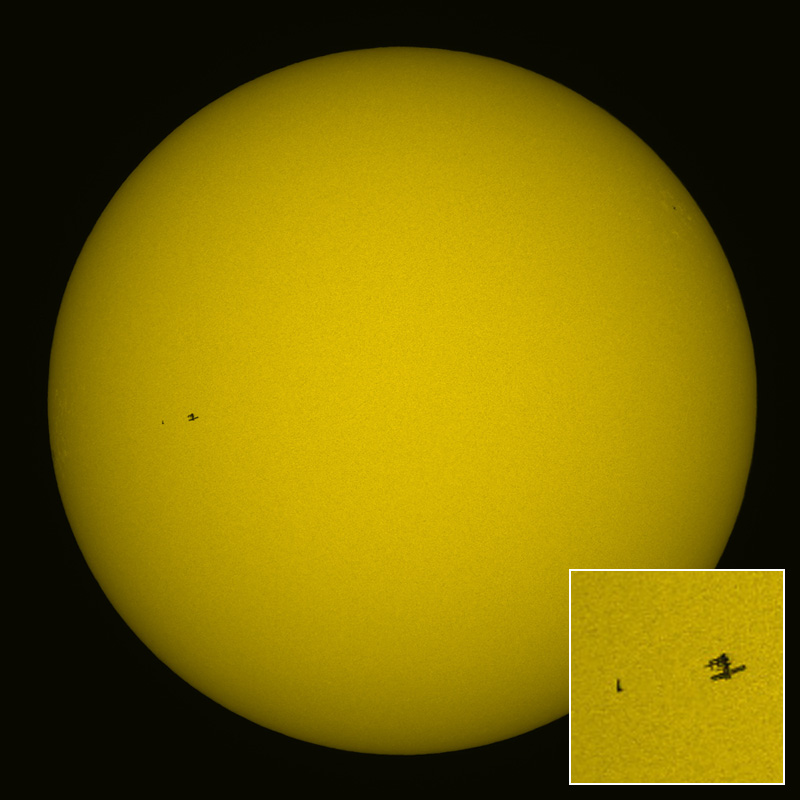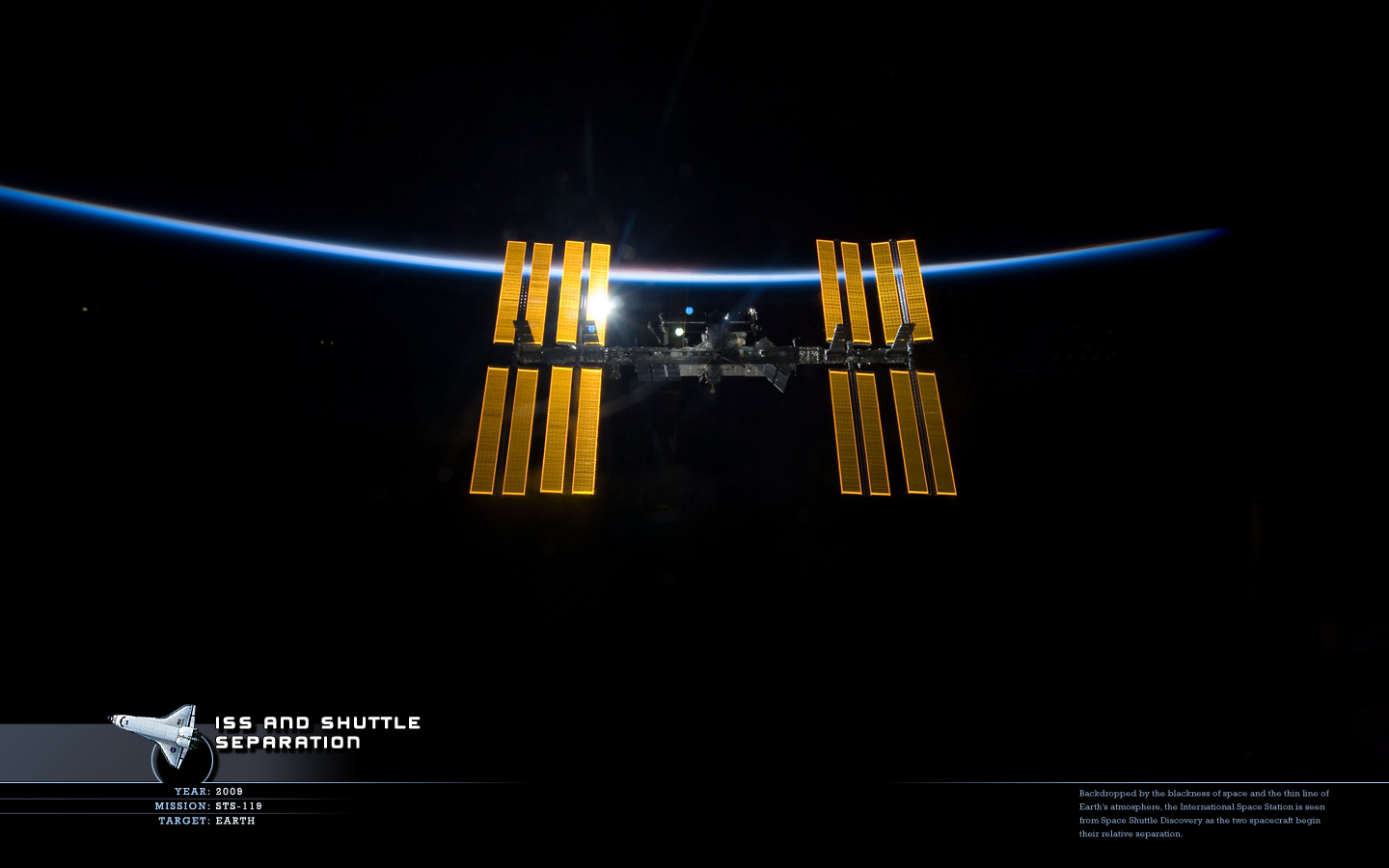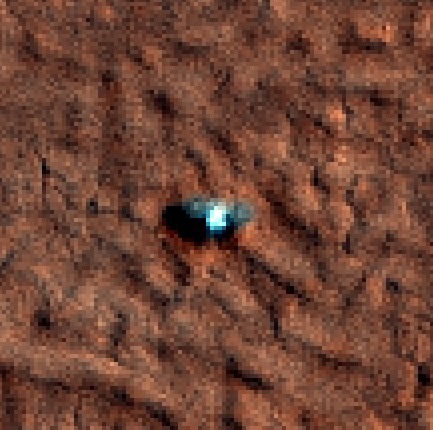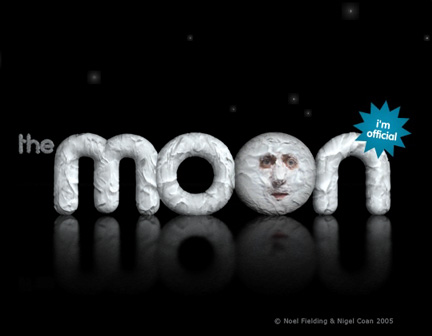 The genius that is Noel Fielding and Julian Barratt has this intriguing recurring character that comes at various times throughout its television show named “The Mighty Boosh”. Its is… “The Moon”. The Moon is an odd character that often injects an observation pretty much independent of anything related to the storyline in betwen scenes. Essentially it is Noel Fielding’s face covered in some kind of cream ala Georges Meliès classic “A Trip to the Moon” and is always, always funny.
The genius that is Noel Fielding and Julian Barratt has this intriguing recurring character that comes at various times throughout its television show named “The Mighty Boosh”. Its is… “The Moon”. The Moon is an odd character that often injects an observation pretty much independent of anything related to the storyline in betwen scenes. Essentially it is Noel Fielding’s face covered in some kind of cream ala Georges Meliès classic “A Trip to the Moon” and is always, always funny.
Rings Not Entirely Flat
 Recent observations of Saturn’s rings from Cassini reveal some vertical structure to the rings. Shown here are disturbances caused by Daphnis, a small moonlet that orbits within the Keeler Gap of the rings. We have seen much of these kinds of disturbances in the rings from tiny moonlets, but the Saturninan equinox finally provides us with an angle of sunlight that reveals such structures from the long shadows they cast. The tallest shadow seen at right is Daphnis itself.
Recent observations of Saturn’s rings from Cassini reveal some vertical structure to the rings. Shown here are disturbances caused by Daphnis, a small moonlet that orbits within the Keeler Gap of the rings. We have seen much of these kinds of disturbances in the rings from tiny moonlets, but the Saturninan equinox finally provides us with an angle of sunlight that reveals such structures from the long shadows they cast. The tallest shadow seen at right is Daphnis itself.
Rhea in Great Detail
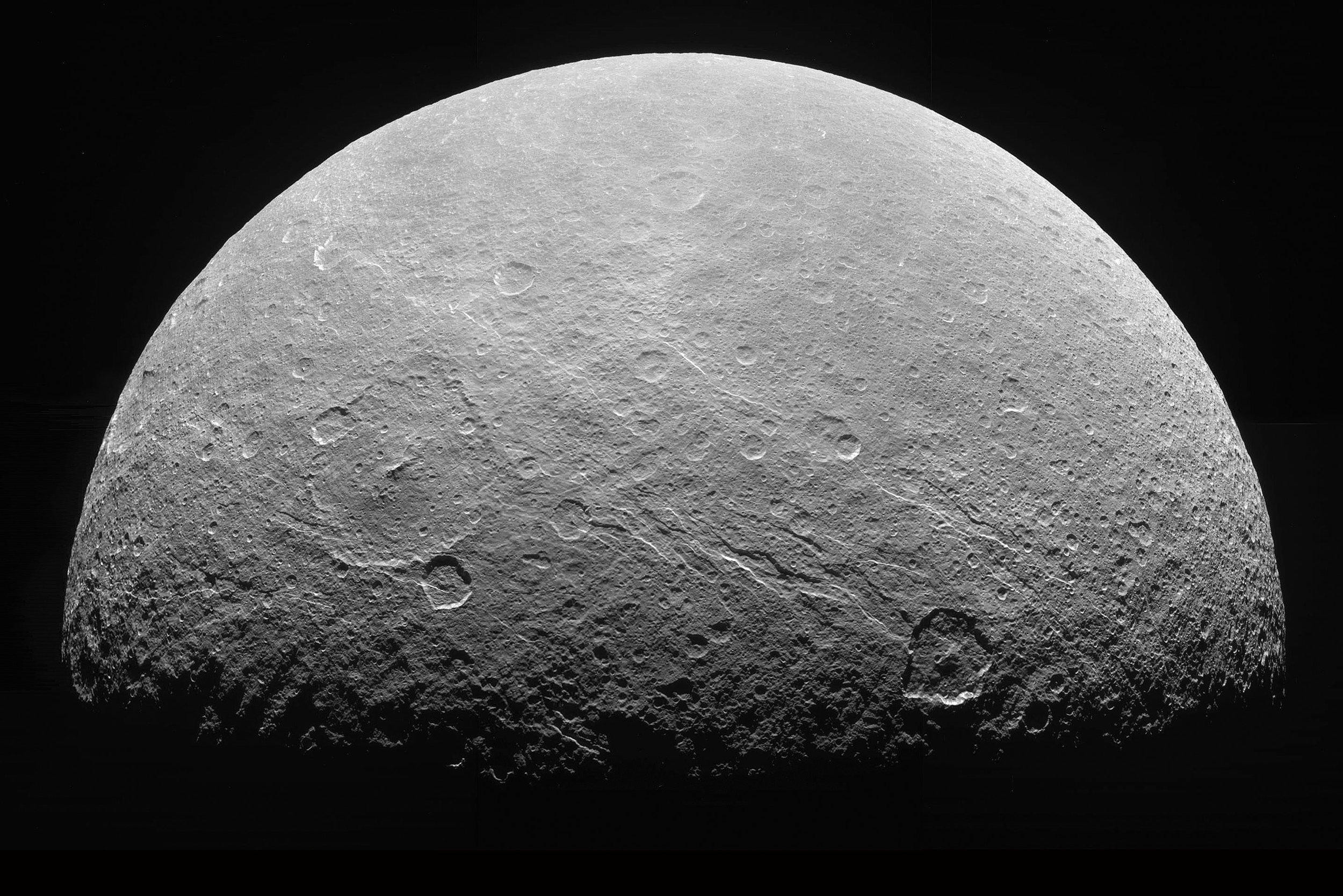 Closest view of Rhea (moon of Saturn) at full resolution, taken at about 98,000-100,000km on February 2009. Mosaic by Exploitcorporations at unmannedspaceflight.com.
Closest view of Rhea (moon of Saturn) at full resolution, taken at about 98,000-100,000km on February 2009. Mosaic by Exploitcorporations at unmannedspaceflight.com.
ISS Looking Like its from the Battlestar Armada
Wow. Best Image of Hubble (The Telescope) Ever.
 Having successfully repaired/upgraded the Hubble Space Telescope in what was easily the most complicated in-space repair mission in history, the Shuttle and Hubble depart the company of one another.
Having successfully repaired/upgraded the Hubble Space Telescope in what was easily the most complicated in-space repair mission in history, the Shuttle and Hubble depart the company of one another.
Taken from NASA image caption: An STS-125 crew member aboard the Space Shuttle Atlantis captured this still image of the Hubble Space Telescope as the two spacecraft begin their relative separation on May 19, after having been linked together for the better part of a week. During the week five spacewalks were performed to complete the final servicing mission for the orbital observatory.
iPhone Skins Featured on feulyourcreativity.com
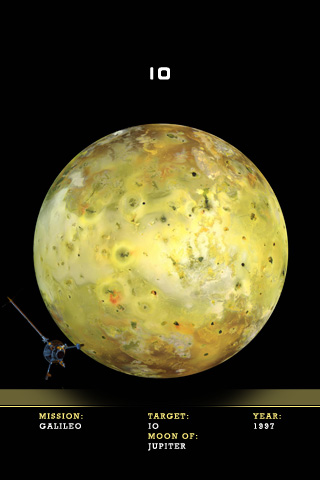 Not to re-post old material, but our iPhone planetary skins were recently posted to fuelyourcreativity.com for free download. So I thought I would just remind everyone and maybe direct a little traffic love their way.
Not to re-post old material, but our iPhone planetary skins were recently posted to fuelyourcreativity.com for free download. So I thought I would just remind everyone and maybe direct a little traffic love their way.
Shuttle and the Sun

 This image taken by Thierry Legault has been making the rounds lately. That bit of a speck seen on the Sun’s lower-right limb is the shuttle on the way to perform it’s current Hubble repair mission. The spacecraft itself can be seen in much greater detail at left and another image of The Shuttle with The Hubble Space Telescope nearby can also be seen on Thierry’s website here.
This image taken by Thierry Legault has been making the rounds lately. That bit of a speck seen on the Sun’s lower-right limb is the shuttle on the way to perform it’s current Hubble repair mission. The spacecraft itself can be seen in much greater detail at left and another image of The Shuttle with The Hubble Space Telescope nearby can also be seen on Thierry’s website here.
A quick google search of Thierry’s name reveals that he has been at this sort of thing before. Seen below is the Shuttle and The International Space Station as seen against The Sun in 2006. These transits happen in less than a second to a ground observer, so capturing this fleeting event is no easy task.
Solar Videos Set to Music
This video was compiled and the music composed by Jeff Sheilds aka Podcast Troubadour. Some may recall Jeff also composed these themes for The Carnival of Space for September 2007.
More Gordan U

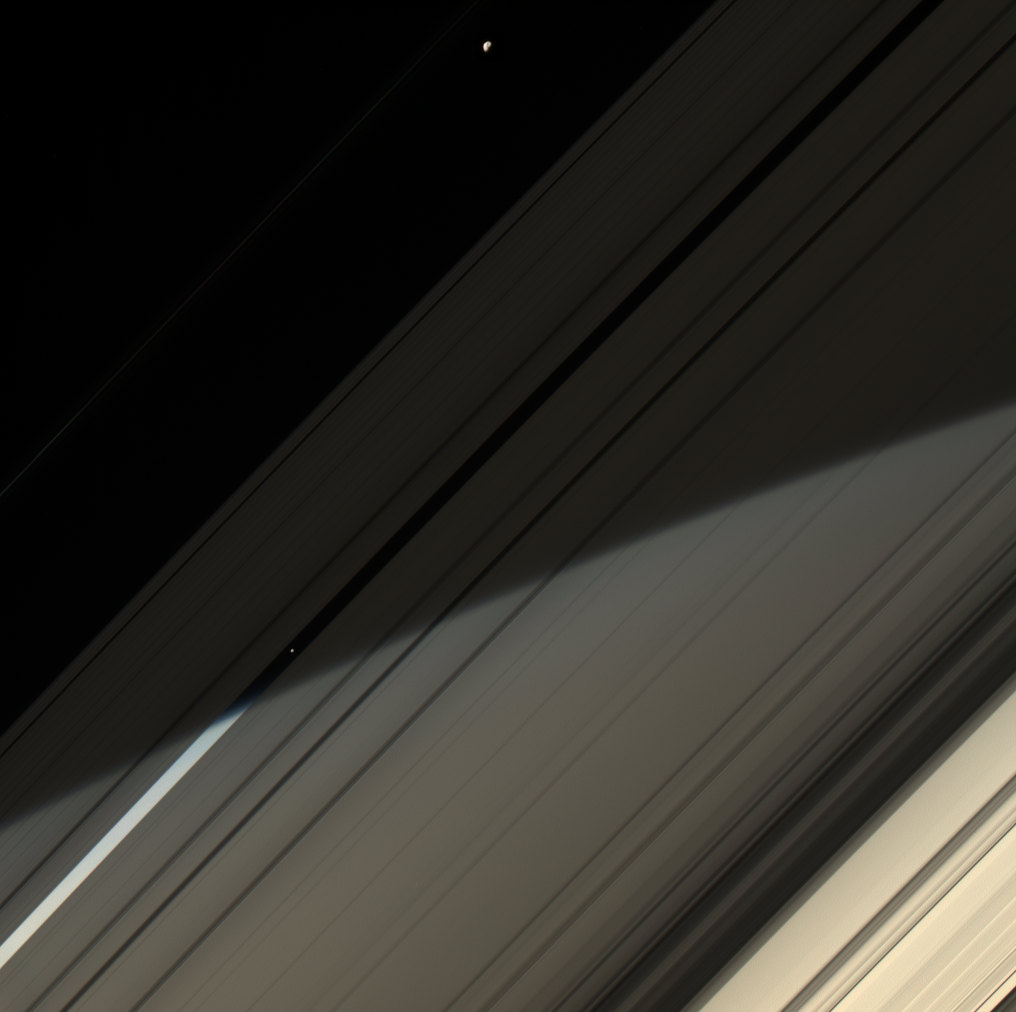

 Some recent posts from Gordan Ugarkovic. The first is just gorgeous, the second featuring Prometheus and Pan in the gaps, the third is also just real pretty and the 4th is two sides of Enceladus. The 2nd and 4th of these images are false color which we publish less often, but these were just too nice to deny.
Some recent posts from Gordan Ugarkovic. The first is just gorgeous, the second featuring Prometheus and Pan in the gaps, the third is also just real pretty and the 4th is two sides of Enceladus. The 2nd and 4th of these images are false color which we publish less often, but these were just too nice to deny.
Time Lapse Imagery from ISS
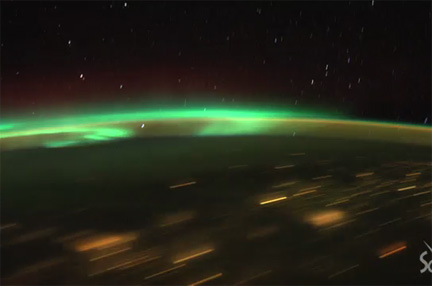 While astronaut Don Pettit was living aboard the International Space Station (ISS), he used some of his off-duty time to make time lapse videos of what he was seeing outside of the ISS window. There are a few examples of this work in this video from Science Friday (NPR). It begins with some beautiful aurora followed by a view of the solar panels rotating (they do this every 90 mins) and a simple look at the earth whirling about through a portal window.
While astronaut Don Pettit was living aboard the International Space Station (ISS), he used some of his off-duty time to make time lapse videos of what he was seeing outside of the ISS window. There are a few examples of this work in this video from Science Friday (NPR). It begins with some beautiful aurora followed by a view of the solar panels rotating (they do this every 90 mins) and a simple look at the earth whirling about through a portal window.
See also this experiment involving candy corns.
NASA Discovers Graphic Designer
Saturnati XX
Something You Never See: Venus in Natural Light
 In a way, as boring as Uranus to look at. In another way… fascinating to see a whole world of pure blankness. It seems almost unreal. Like a giant pearl.
In a way, as boring as Uranus to look at. In another way… fascinating to see a whole world of pure blankness. It seems almost unreal. Like a giant pearl.
According to Gordan Ugarkovic, “This is calibrated color using actual red, green and blue filters. If you were to enhance the contrast you’d see there are white-yellow cloud patterns. The problem with pretty much all images of Venus released so far is that they’ve been enhanced/false color or just colorizations of ultraviolet frames. It’s only once you go to (ultra)violet wavelengths that any cloud bands become readily visible. Human eye just doesn’t cut it here.”
Thanks as usual to for this rare gem.
Saturn Through the Eyes of Hubble
Best Image of ISS Yet
Moon Restored
 The Lunar Orbiter Image Recovery Project has been working to restore historic images from the Lunar Orbiter missions which were launched during the years 1966 and 67. These images have been remastered from the original data sets with today’s computing technology resulting in not only reducing the noise, but brought out details that were not possible with the technology available when they were taken. The above image is just a section of the original (seen below) and is also a work-in-progress so you will still notice the striping and other anomalies.
The Lunar Orbiter Image Recovery Project has been working to restore historic images from the Lunar Orbiter missions which were launched during the years 1966 and 67. These images have been remastered from the original data sets with today’s computing technology resulting in not only reducing the noise, but brought out details that were not possible with the technology available when they were taken. The above image is just a section of the original (seen below) and is also a work-in-progress so you will still notice the striping and other anomalies.
Although, as a graphic designer I have to say the original has it’s charm too. I like the distortion, noise and various odd anomalies of these historic missions so much that it led to my making the Smallsteps series of wallpapers last year. Maybe this new LOIRP image needs to be added to that collection… but I would probably stick with the original for the effect. I love the work they are doing, but I also like that you can see the history in these old crusty images too.
And My Other Blog Is...
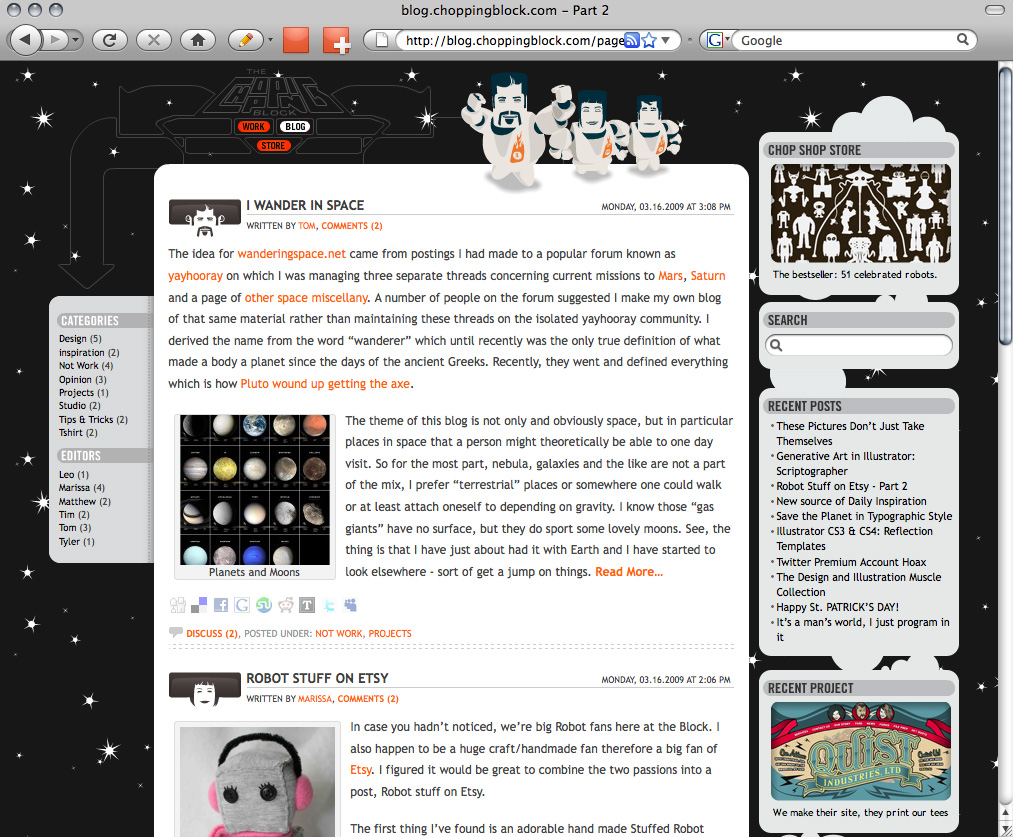 The Chopping Block has finally entered the blogosphere. I am Tom on there. I am represented by a robot and write much sillier stuff there than I do here. See blog.choppingblock.com now and forever.
The Chopping Block has finally entered the blogosphere. I am Tom on there. I am represented by a robot and write much sillier stuff there than I do here. See blog.choppingblock.com now and forever.
Ted Stryk’s Triton Redux
 Planetary Blog has a nice review of Voyager 2’s flyby of Neptune’s moon Triton. That was 1989 and sadly, there is no way we will be seeing any new Triton images for at least 20 years as no missions are currently approved. There is a concept mission being considered for a New Frontiers class probe which is where we even get the number 20 from, but if that mission is not approved… who knows.
Planetary Blog has a nice review of Voyager 2’s flyby of Neptune’s moon Triton. That was 1989 and sadly, there is no way we will be seeing any new Triton images for at least 20 years as no missions are currently approved. There is a concept mission being considered for a New Frontiers class probe which is where we even get the number 20 from, but if that mission is not approved… who knows.
Ted Stryk has been re-working the old Voyager mission images at Triton and the results are shockingly sharp and high resolution. Ted’s work is also used on this “portrait” image of Triton, but this image shown above is another view and is comparatively massive in size for the Voyager Uranus/Neptune encounters.
Pluto, “Weak”.
 Not that I am for Pluto inclusion in the planetary family... I just keep running into these references to the Plutonian contreversy.
Not that I am for Pluto inclusion in the planetary family... I just keep running into these references to the Plutonian contreversy.

